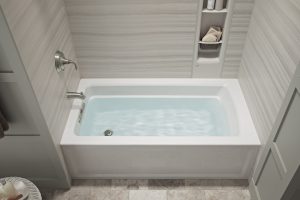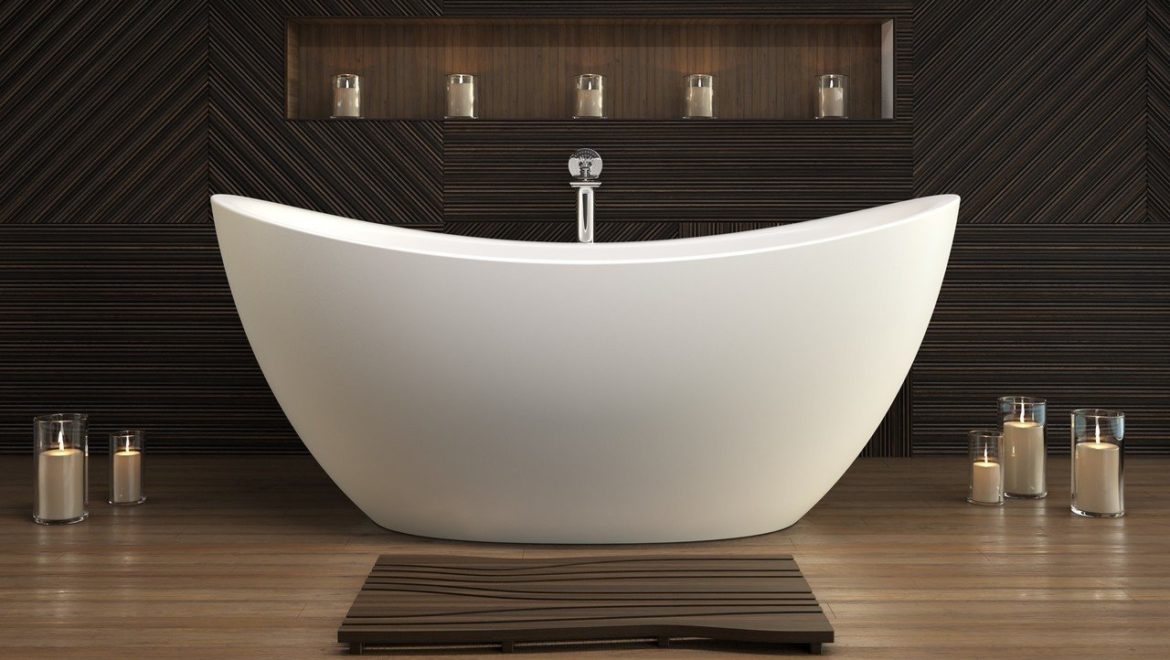Bathtubs: Everything You Want To Know
There are many different bathtubs such as:
- Firstly,Freestanding tub
- Secondly, Drop in tub
- Three-wall alcove tub
- Corner tub
- Undermount tub
- Claw foot tub
- Hot tub
- Finally, Japanese tub
Three-wall alcove tub
Pros for example:
- Firstly, Easy to clean and maintain
- Practical and functional
- Can be decorated
- Finally, Affordable
Cons
- Generic in feel
- Must be placed between two walls
Freestanding tub
Pros for instance
- Adds to house value
- Visual impact
- Can be situated anywhere in the room
- Versatile look
Cons such as:
- No storage areas
- Expensive
- Extremely heavyweight
Drop in tub
Pros
- Firstly, high end, luxurious feel
- No slip, grip handles
Cons
- Difficult to install and remove.
Corner tubs
Pros such as:
- Maximum versatility
- Makes use of corner space
- Can be glasses enclosed or open style
Cons
- Tub accessibility is limited
- Can only be in the corner of the room
Clawfoot tub
Pros for example:
- Adds immediate vintage charm and period detail to a bathroom
- Easy to install
- Space beneath
Cons
- Lack of storage
Undermount tub
Pros in particular
- Easy to clean
- Durable and sturdy
- High end, luxurious feel
Cons
- So, tub cannot simply be removed without destroying the surrounding decking.
Hot tubs
Pros such as:
- Deep soaking relaxation
- Hydrotherapy for those with achy joints and arthritis
Cons
- Expensive
Japanese tub
Pros for instance,
- Amazing design
- Adds house value
- Artistic presentation
- Offers deep soaking
Cons for example:
- No storage
- Expensive
Questions that are frequently asked about bathtubs
What materials are bathtubs made from?
Often bathtubs are made out of porcelain which is usually steel-based. But bathtubs can be made from marble, acrylic, and fiberglass. However, historically bathtubs have been made from wood, copper, and iron.
Can bathtubs be repaired?
In addition, it is possible to make repairs on a variety of tubs. For example, these include porcelain tubs and those made from marble, acrylic, and fiberglass. Small chips and scratches can often be repaired making this more of an economical option than replacing the entire tub.
How long do bathtubs last?
Although it depends on the tub material and how well it has been made. In addition, you can find original bathtubs in old houses that are in fantastic condition at 100 years old.
Furthermore, what are the most popular bathtubs?
- Freestanding tub
- Drop in tub
- Three-wall alcove tubs
Can bathtubs be recycled?
So, a bathtub is not easily recycled. Although, cast iron tubs may be of interest to some metal scrap yards or foundries. Nevertheless, steel is one of the most recycled materials. However, it takes some work to remove the enamel finish which may not be worth the effort for some recyclers. It may be better to repurpose your bathtub instead of recycling, for example:
- Feeding and drinking troughs for animal farms
- Container for garden
- Backyard pool for pets
- Finally, Party bucket for beverages and ice.







